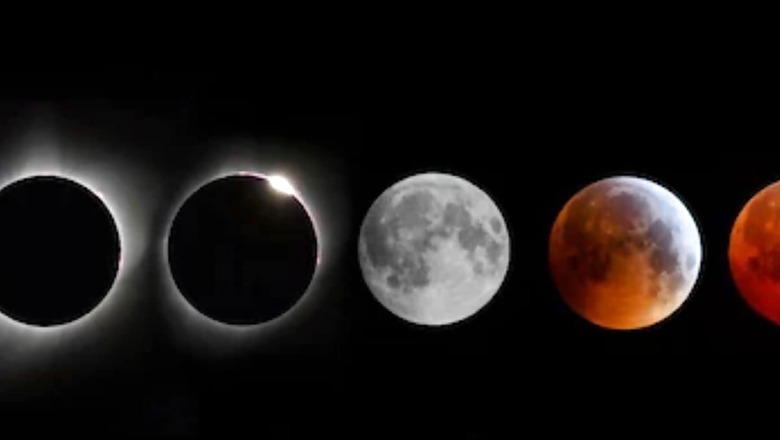
views
The last lunar eclipse (Chandra Grahan) of 2024 will occur on September 18. This partial eclipse will be visible in various parts of the world, but not in India. A lunar eclipse occurs when the Earth moves between the Sun and the Moon, casting a shadow on the Moon and blocking sunlight.
Date of Lunar Eclipse
The last lunar eclipse of 2024 will coincide with Bhadrapada Purnima on September 18. It is a partial lunar eclipse in which a small part of the Moon is obscured by the Earth’s umbra.
Time of Lunar Eclipse
The lunar eclipse will begin at 6:11 am Indian Standard Time (IST) on September 18 and end at 10:17 am, with a total duration of 4 hours and 6 minutes. The key timings for the phases of the eclipse are as follows:
Penumbral eclipse begins: 06:11 AM
Partial eclipse begins: 07:42 AM
Maximum eclipse: 08:14 AM
Partial eclipse ends: 08:45 AM
Penumbral eclipse ends: 10:17 AM
What is the Sutak period?
In Hinduism, the Sutak period is observed as a period of inauspiciousness before a solar eclipse. This period usually begins 9 hours before the eclipse. However, since the lunar eclipse on September 18 will occur during the day and will not be visible in India, the Sutak period will not be observed.
Significance of Lunar Eclipse in Hinduism
Lunar eclipses have great religious and cultural significance in Hinduism. However, if the eclipse is not visible to the naked eye, it has no religious value. Since the eclipse will not be visible in India on September 18, no religious activities or rituals related to Chandra Grahan will take place.
A lunar eclipse occurs when the Earth passes between the Sun and the Moon, casting a shadow on the Moon. In a partial lunar eclipse, the Earth’s shadow covers only part of the Moon, leaving part of the Moon visible. This partial shadow can give the Moon a reddish tint, a phenomenon often referred to as a “blood moon.”



















Comments
0 comment